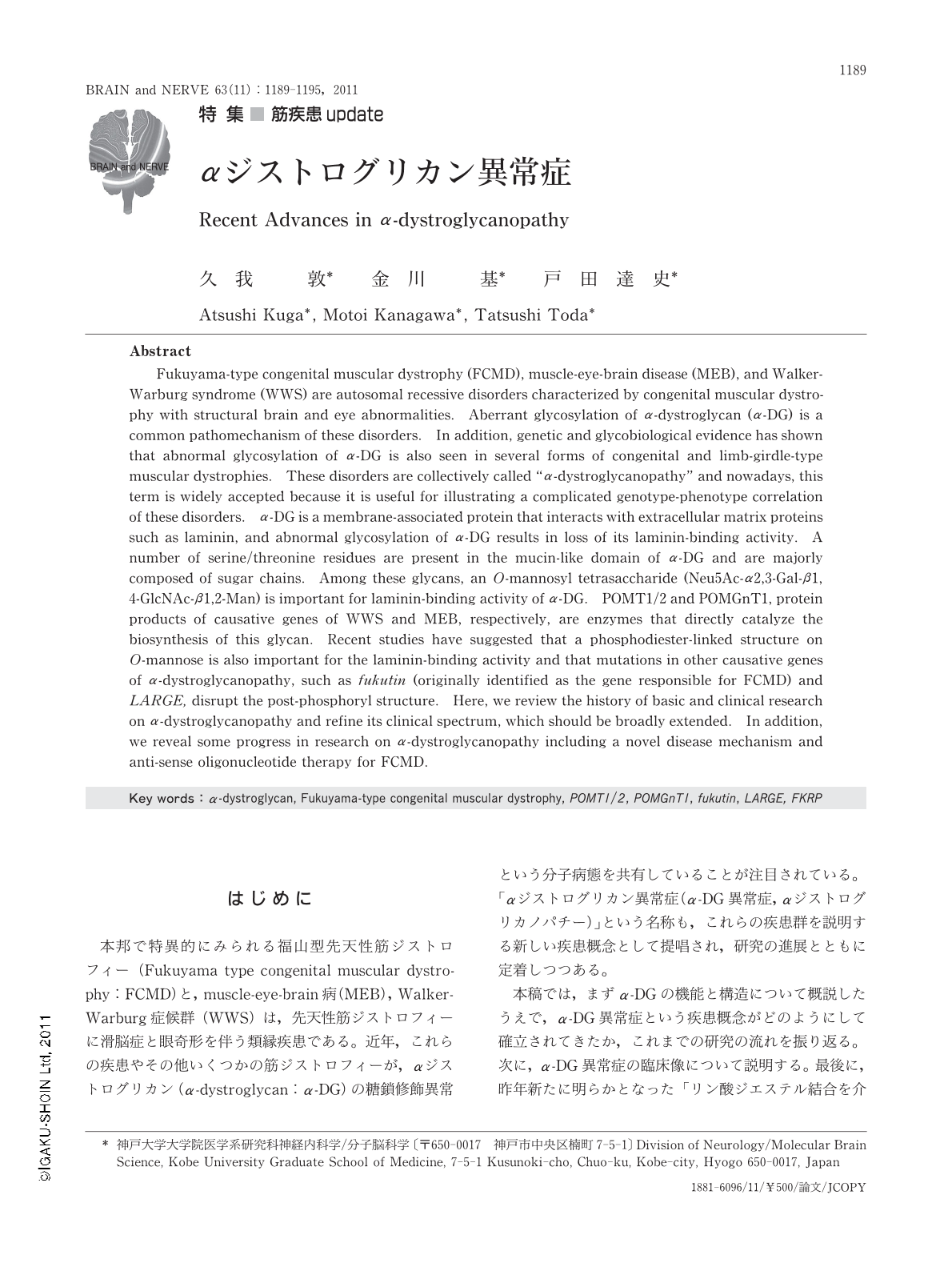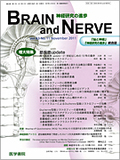Japanese
English
- 有料閲覧
- Abstract 文献概要
- 1ページ目 Look Inside
- 参考文献 Reference
はじめに
本邦で特異的にみられる福山型先天性筋ジストロフィー(Fukuyama type congenital muscular dystrophy:FCMD)と,muscle-eye-brain病(MEB),Walker-Warburg症候群(WWS)は,先天性筋ジストロフィーに滑脳症と眼奇形を伴う類縁疾患である。近年,これらの疾患やその他いくつかの筋ジストロフィーが,αジストログリカン(α-dystroglycan:α-DG)の糖鎖修飾異常という分子病態を共有していることが注目されている。「αジストログリカン異常症(α-DG異常症,αジストログリカノパチー)」という名称も,これらの疾患群を説明する新しい疾患概念として提唱され,研究の進展とともに定着しつつある。
本稿では,まずα-DGの機能と構造について概説したうえで,α-DG異常症という疾患概念がどのようにして確立されてきたか,これまでの研究の流れを振り返る。次に,α-DG異常症の臨床像について説明する。最後に,昨年新たに明らかとなった「リン酸ジエステル結合を介したα-DG糖鎖修飾構造」について,さらに,FCMDの病態とその治療について,われわれのグループが最近明らかにした知見を紹介する。
Abstract
Fukuyama-type congenital muscular dystrophy (FCMD),muscle-eye-brain disease (MEB),and Walker-Warburg syndrome (WWS) are autosomal recessive disorders characterized by congenital muscular dystrophy with structural brain and eye abnormalities. Aberrant glycosylation of α-dystroglycan (α-DG) is a common pathomechanism of these disorders. In addition,genetic and glycobiological evidence has shown that abnormal glycosylation of α-DG is also seen in several forms of congenital and limb-girdle-type muscular dystrophies. These disorders are collectively called "α-dystroglycanopathy" and nowadays,this term is widely accepted because it is useful for illustrating a complicated genotype-phenotype correlation of these disorders. α-DG is a membrane-associated protein that interacts with extracellular matrix proteins such as laminin,and abnormal glycosylation of α-DG results in loss of its laminin-binding activity. A number of serine/threonine residues are present in the mucin-like domain of α-DG and are majorly composed of sugar chains. Among these glycans,an O-mannosyl tetrasaccharide (Neu5Ac-α2,3-Gal-β1,4-GlcNAc-β1,2-Man) is important for laminin-binding activity of α-DG. POMT1/2 and POMGnT1,protein products of causative genes of WWS and MEB,respectively,are enzymes that directly catalyze the biosynthesis of this glycan. Recent studies have suggested that a phosphodiester-linked structure on O-mannose is also important for the laminin-binding activity and that mutations in other causative genes of α-dystroglycanopathy,such as fukutin (originally identified as the gene responsible for FCMD) and LARGE,disrupt the post-phosphoryl structure. Here,we review the history of basic and clinical research on α-dystroglycanopathy and refine its clinical spectrum,which should be broadly extended. In addition,we reveal some progress in research on α-dystroglycanopathy including a novel disease mechanism and anti-sense oligonucleotide therapy for FCMD.

Copyright © 2011, Igaku-Shoin Ltd. All rights reserved.


